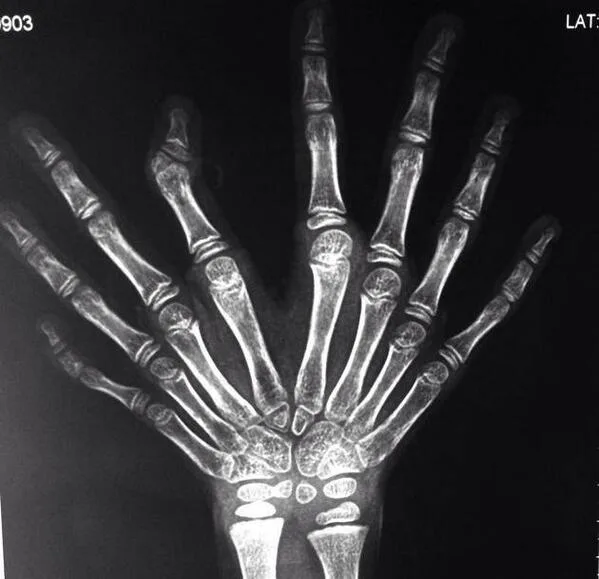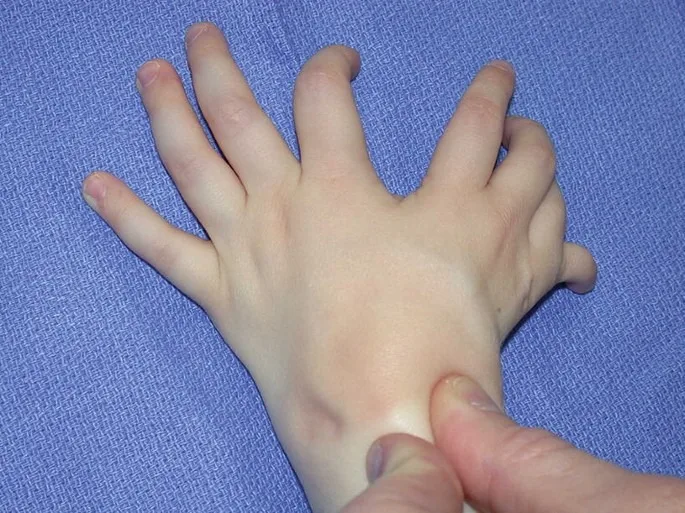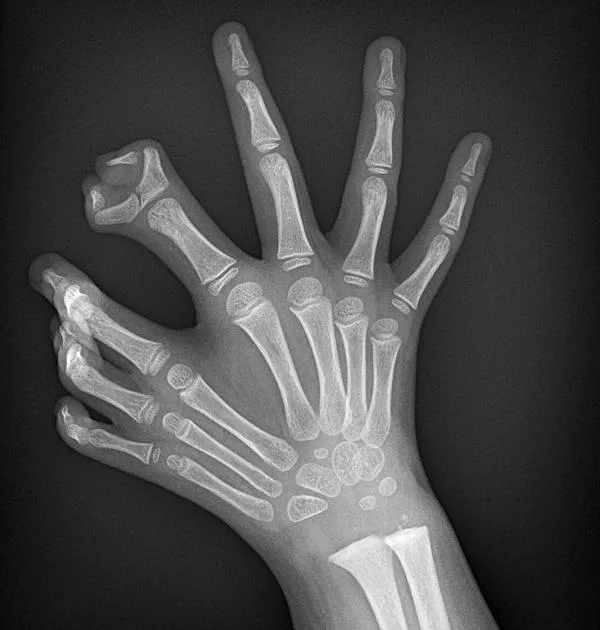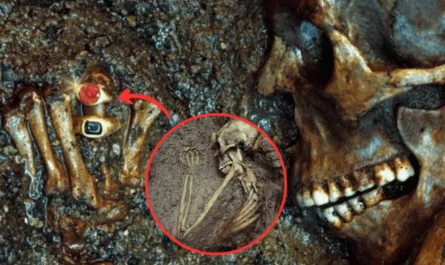Ulnar Dimelia: The Extraordinary Mirror Hand Syndrome

The images reveal one of the rarest congenital anomalies in medical history: ulnar dimelia, commonly known as mirror hand. This condition transforms a human hand into a perfectly symmetrical, seven- or eight-fingered structure with no thumb, where the ulna (forearm bone) is duplicated, the radius is absent, and the wrist contains twice the normal number of carpal bones. Metacarpals and phalanges are mirrored along a central axis, creating a hand that looks as if it has been reflected in a mirror. Most astonishingly, the tendons are cross-connected: when one finger flexes, its mirror opposite moves in perfect synchronization, producing an eerie, symmetrical motion.
A Condition Rarer Than Rare

Ulnar dimelia is extraordinarily uncommon—fewer than 100 cases have ever been documented worldwide, with many historical reports from the 19th and early 20th centuries. The genetic cause remains elusive, though mutations affecting the sonic hedgehog (SHH) signaling pathway—critical for limb patterning—are strongly implicated. Normally, SHH creates asymmetry (thumb on one side, pinky on the other); when disrupted bilaterally, the limb develops as two ulnar halves fused at the midline.
The hand typically features:
- 7–8 fingers (polydactyly) of roughly equal length.
- No thumb—all digits resemble ring or middle fingers.
- Duplicated ulna, absent radius.
- Mirrored tendon arrangement, causing symmetric movement.
Function varies: some individuals have surprisingly good grip despite the lack of opposition, while others require surgical modification.
Historical and Medical Significance

First formally described in the 19th century, early cases were often sensationalized as “monstrosities.” Modern surgery can reconstruct a more functional hand by removing central digits and creating a thumb, but many affected individuals—especially in cultures where the condition is accepted—live without intervention. The mirrored motion, where flexing one finger forces its twin to mirror the action, has fascinated neurologists studying tendon mapping and motor control.
A Living Mirror
This condition, like the lithopedion’s silent endurance or the third state’s cellular persistence, reveals nature’s capacity for profound deviation. The hand functions—often remarkably well—despite its alien symmetry, a reminder that human variation can be both beautiful and functional. In medical literature, ulnar dimelia remains a cornerstone for studying limb development, echoing the ingenuity of the Moors’ architecture or the precision of dendrochronology’s rings.

The Human Behind the Anomaly
Individuals with mirror hand are not defined by their condition. Many lead full lives—typing, playing instruments, or simply embracing their uniqueness. The mirrored tendons, forcing symmetric movement, create a living reflection: every action doubled, every gesture echoed.
Ulnar dimelia is not a curse but a rare variation—one of medicine’s most striking reminders that the blueprint of life can, occasionally, draw its own astonishing patterns.





